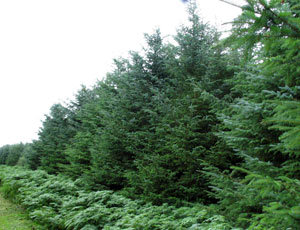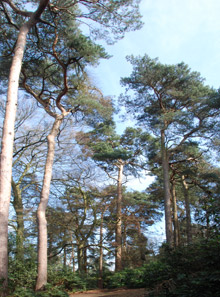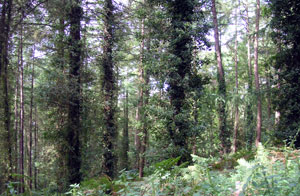What's been happening to Scottish Forestry? Tilhill tell all.

Tilhill UPM manage many large private forestry estates and produce an excellent annual report on the state of the market both for the land itself and forestry products. Some time back, I went to the presentation of Tilhill's 2011 Forest Market Report which was surprisingly upbeat. The main message was that land values are strongly up, forest product prices are strongly up and volumes of land sold, measured by value, are at historically high levels. Property values have increased about 15% in the year to the end of September 2011, according to Crispin Golding of Tilhill UPM, mainly because: there is increased demand for land from investors who are tax-driven or who are looking for safe havens for cash, or both; timber prices have gone up principally because of high oil prices and the devaluation of the pound (making UK timber forestry output more competitive with foreign countries including the Baltic States who are enormous timber exporters).
Scotland dominates commercial forestry market in the UK
 What Tilhill also explain is that Scotland dominates commercial timber growing in the UK - in 2011 it went up to 76% of UK market while Wales is steady at about 5 or 6%. The market in forestry land that gets traded is very small in relation to the total amount of forestry land because there are such vast areas owned by the Forestry Commission and in private estates that don't change hands - in total Tilhill estimate that less than 1% of the forestry acreage changes hands each year, and even this includes much that is "off-market". In total about £50 million worth of forests changed hands over the 12 months. Interestingly a part of this does actually come from the Forestry Commission who actively sell parts of their forestry estate in Scotland - they sell about £10 million worth each year. They mostly use the proceeds to buy more land for forestry - either to plant new forests or to create woodlands near to towns.
What Tilhill also explain is that Scotland dominates commercial timber growing in the UK - in 2011 it went up to 76% of UK market while Wales is steady at about 5 or 6%. The market in forestry land that gets traded is very small in relation to the total amount of forestry land because there are such vast areas owned by the Forestry Commission and in private estates that don't change hands - in total Tilhill estimate that less than 1% of the forestry acreage changes hands each year, and even this includes much that is "off-market". In total about £50 million worth of forests changed hands over the 12 months. Interestingly a part of this does actually come from the Forestry Commission who actively sell parts of their forestry estate in Scotland - they sell about £10 million worth each year. They mostly use the proceeds to buy more land for forestry - either to plant new forests or to create woodlands near to towns.
Tilhill offer to help acquire and manage forestry investments
Guy Warren of Tilhill UPM and George McRobbie analyse the forest-product market into three elements: energy or woodfuel (whether pellets or firewood), small roundwood timber and, most valuable, sawlog timber. All these forestry markets have been buoyant and have been helped by the lower value of sterling and the historically high price of oil. However, values of growing trees in the forest are still very variable with important factors being geographical location in relation to a timber mill and the costs of extraction in any particular woodland. Tilhill offer a service where they will assess this sort of thing for a prospective buyer and produce a valuation and cashflow projection for a particular forest, although their view is that the ideal investment is over £500,000. This is because a reasonable size is more economical in covering the fixed costs of management and smoothing the lumpiness of income from thinning and harvesting. Their acquisition fee is typically about 2% of the purchase price (or guide price) but there are also costs of legal fees and stamp duty meaning that the cost of getting into a forestry investment will be about 5-6% of the agreed price.
 Is commercial forestry a buy or a sell? Tilhill and Savills discuss the pros and cons
Is commercial forestry a buy or a sell? Tilhill and Savills discuss the pros and cons
An informal partnership between Tilhill UPM and Savills means that they can give strong property acquisition advice (Savills) as well as offering hands-on management services (Tilhill) though those at their presentation sensed that they do not share exactly the same perspective on the current market with Jonathan Henson of Savills indicating that the market was a bit toppy and that owners might think now was a good opportunity to sell with plenty of demand "out there". This is perhaps confirmed by the fact that Tillhill's 2011 report shows that almost all forestry properties in Scotland sell at above the guide price and often as much as 50% above it. Against this Ali Gemmell was more bullish on forestry prospects and felt the extras were helpful - the chance of income from telecom masts, minerals, sporting income and hydro or wind projects. Leisure developments also have some impetus from the increasing number of people visiting woodlands which according to the Forestry Commission figures increased between 2002 and 2004 from 20 million forest visits to about 60 million per year, the level that it stands at now.
For those principally interested in small woodlands, Tilhill's report is interesting in showing that many of the same factors that affect commercial forestry are driving the market in small woodlands - demand for woodfuel, amenity, timber land as a safe haven and negative real interest rates.
Comments are closed for this post.
